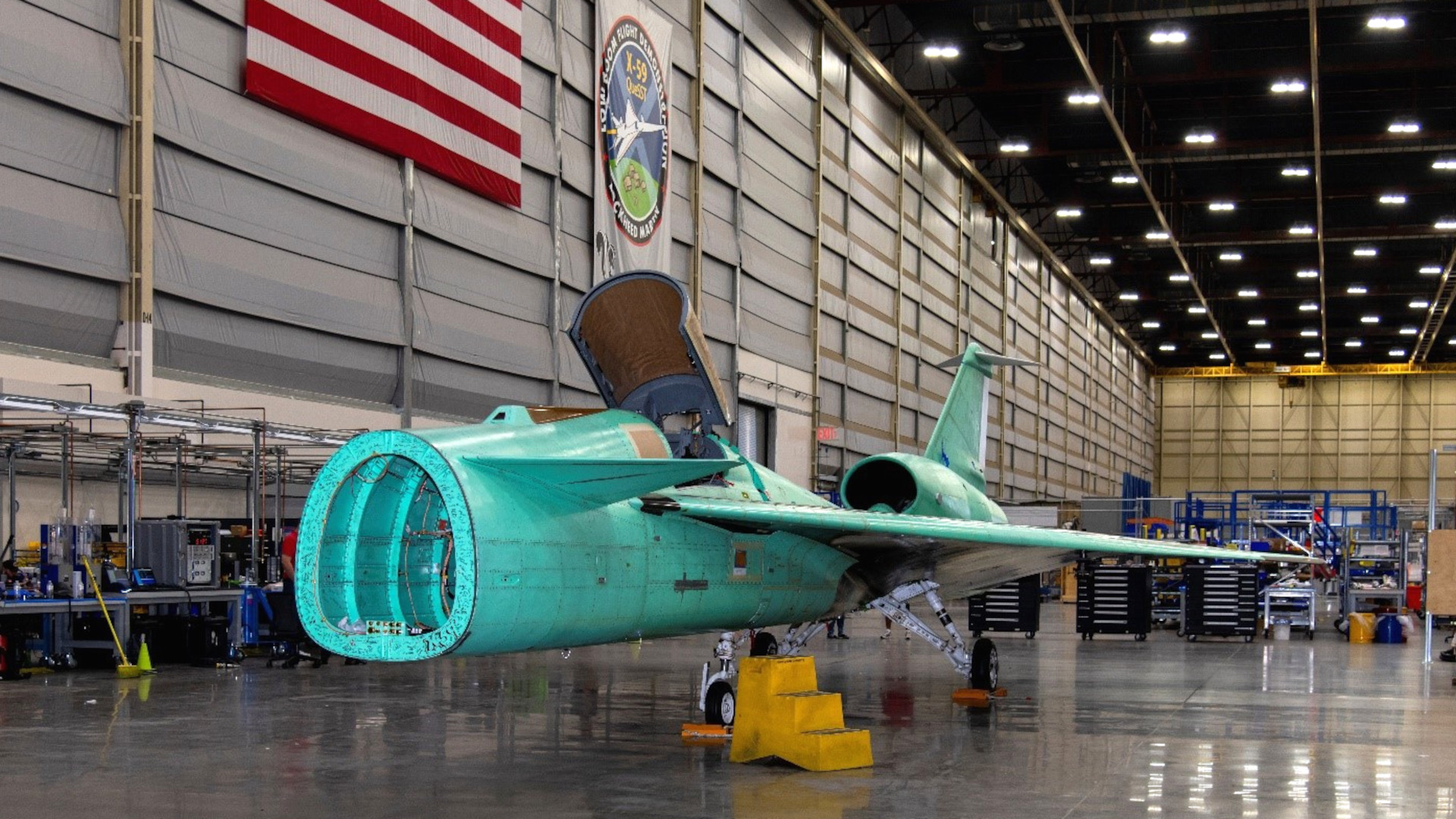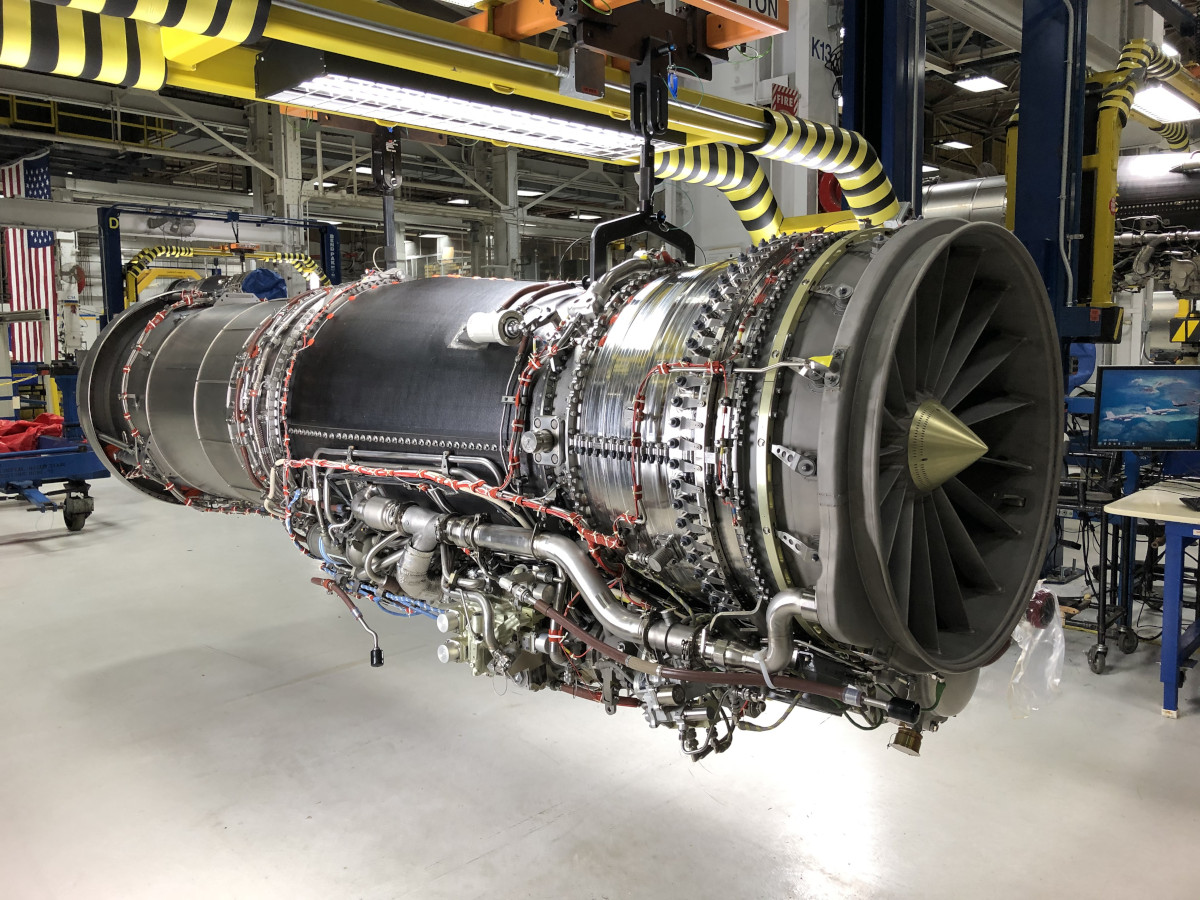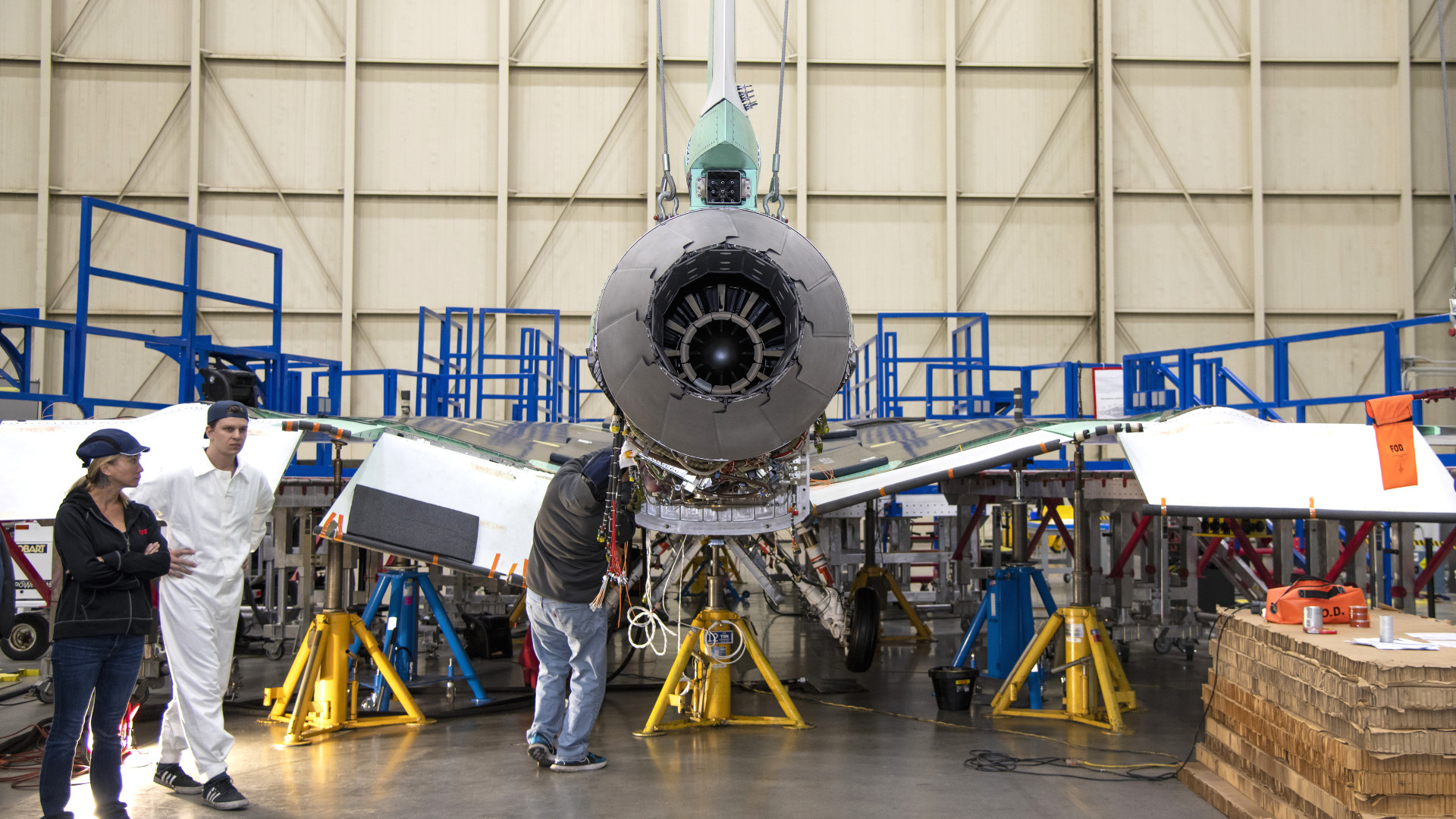NASA’s X-59A Quiet Supersonic Technology aircraft, or QueSST, now has its F414-GE-100 turbofan engine, another important step toward its first flight, which is currently scheduled to take place next year. Lockheed Martin’s Skunk Works advanced projects division is building the experimental X-59A, which will be used to explore sonic-boom-mitigating technologies that could significantly affect the future of supersonic flight, particularly in the commercial realm.
Personnel at Skunk Works’ main facility at the U.S. Air Force’s Plant 42 in Palmdale, California, installed the F414-series engine on the one-of-a-kind X-59A earlier this month, according to a press release from NASA today. The turbofan is designed to produce around 22,000 pounds of thrust at full afterburner and is expected to propel the jet at speeds up to Mach 1.4 and altitudes of approximately 55,000 feet.

“The engine installation is the culmination of years of design and planning by the NASA, Lockheed Martin, and General Electric Aviation teams,” Ray Castner, NASA’s propulsion performance lead for the X-59A project, said in a statement. “I am both impressed with and proud of this combined team that’s spent the past few months developing the key procedures, which allowed for a smooth installation.”
General Electric delivered the F414-GE-100, which it developed specifically for the QueSST program, to NASA in 2020. The engine is a custom derivative of the F414-GE-39E used in E/F variants of the Saab Gripen fighter jet, which was itself optimized for use in single-engine aircraft. The F414 series is currently used primarily to power Boeing’s twin-engine F/A-18E/F Super Hornet fighter jets and EA-18G Growler electronic warfare aircraft.
“The tried and true guts of the [F414-GE-100] engine, all the turbomachinery, are the same or very similar [to the F414-GE-39E,” Anthony Hazlett, General Electric’s the X-59 demo model engineer at General Electric that led the team that crafted the new engine, said back in 2020. “But the engine’s external design and the way the engine operates was upgraded.”
NASA says the changes that resulted in the F414-GE-100 include new software for the engine control systems and additional code to allow the jet to ‘talk’ to the X-59A, as well as a modified fuel line.

In addition, “to save weight and space, the X-59’s version of the F414 does not have the tracks, so the engine – which will be placed underneath the aircraft and lifted – will rely on human eyeballs and hands to manually guide it into place,” according to NASA. “Once mechanically bolted in place, electrical, fuel, and various other lines will be hooked up and the whole engine/aircraft combination system tested. That will lead to the first time the engine is fired up within the aircraft as it remains in place with brakes on and restraining tethers fastened.”
The exact current test schedule for the X-59A is not entirely clear. As of January, the hope had been that the aircraft would make its maiden flight before the end of the year. The projected date of the first flight has now been pushed back into 2023 for unclear reasons, despite having completed key structural testing on the ground in April.

The delays, whatever the cause might be, also mean that NASA is now not expecting to begin actual data-gathering flights over areas of the United States until 2025, rather than 2024 as had been previously expected. The hope is that the X-59A distinct design and other features, including its very long and relatively slender nose that blocks all forward visibility for the pilot and requires a special remote vision system, will help mitigate the impact of its sonic booms on communities on the ground. NASA and Skunk Works have both said in the past that the goal is for the booms to be heard and felt on the ground on the same level as rolling thunder or a car door slamming shut.

The Federal Aviation Administration currently heavily restricts supersonic flight in the United States, which is currently almost exclusively conducted by the U.S. military. Other civilian aviation agencies do the same in many other countries due to the noise such flights generate and the potential for damage on the ground. There has been a renaissance of sorts at least in interest in commercial supersonic flight in recent years and the hope is that the X-59A will be among the things to help usher in a new era in that regard. Quieter and just generally more practical supersonic flight could be of interest to the U.S. military and other armed forces for a variety of operational and training-related reasons, as well.
The X-59A could also be used for a variety of other supersonic flight research purposes after the completion of the QueSST project, regardless of the results.
Though it remains to be seen when the X-59A will actually take to the skies for the first time, the unique supersonic test jet is definitely continuing to take shape, including now with the addition of its F414-GE-100 jet engine.
Contact the author: joe@thedrive.com
